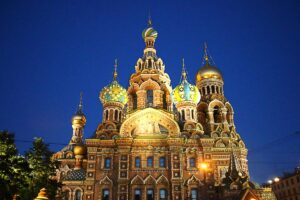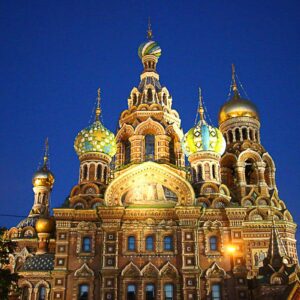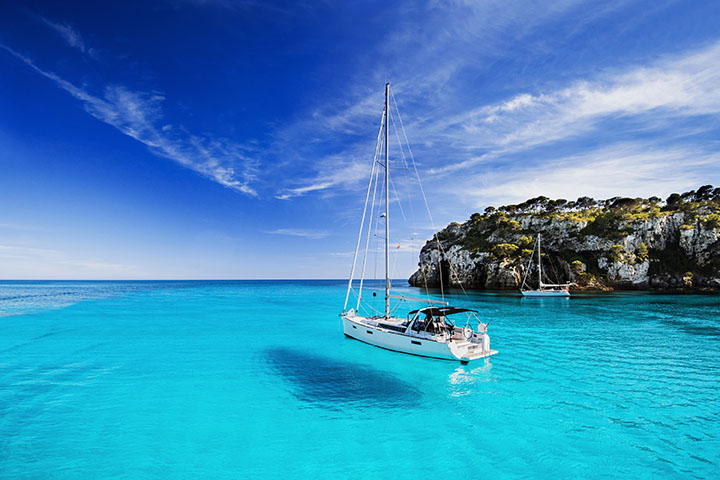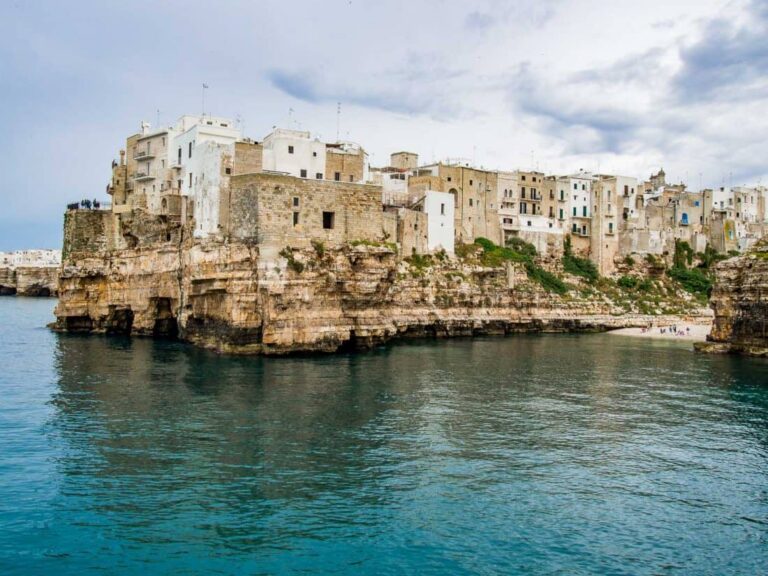St. Petersburg, Russian Sankt-Peterburg, formerly (1914–24) Petrograd and (1924–91) Leningrad, city and port, extreme northwestern Russia. A major historical and cultural centre and an important port, St. Petersburg lies about 400 miles (640 km) northwest of Moscow and only about 7° south of the Arctic Circle. It is the second largest city of Russia and one of the world’s major cities. St. Petersburg has played a vital role in Russian history since its founding in 1703. For two centuries (1712–1918) it was the capital of the Russian Empire. The city is remembered as the scene of the February (March, New Style) and October (November, New Style) Revolutions of 1917 and for its fierce defense while besieged during World War II. Architecturally, it ranks as one of the most splendid and congenial cities of Europe. Its historic district was designated a UNESCO World Heritage site in 1990. Area city, 550 square miles (1,400 square km). Pop. (2010) 4,879,566; (2012 est.) 4,953,219.
Character of the city
St. Petersburg is a mecca of cultural, historical, and architectural landmarks. Founded by Tsar Peter I (the Great) as Russia’s “window on Europe,” it bears the unofficial status of Russia’s cultural capital and most European city, a distinction that it strives to retain in its perennial competition with Moscow. Three distinctive characteristics of St. Petersburg engage attention. The first is the city’s harmonious mix of western European and Russian architecture. Second is St. Petersburg’s lack of an unequivocal city centre, which, in other Russian cities of medieval origin, is defined by a kremlin and its surrounding area. The third characteristic feature of the city is its many waterways. The short but full-flowing tributaries and canals of the Neva River that stretch to the Baltic coast are inseparable from St. Petersburg’s panorama. Many of the city’s most famed architectural sites stretch along the Neva’s historic embankments. Moreover, the bridges and natural canals of the river have earned St. Petersburg the nickname “Venice of the North.” Because of St. Petersburg’s northerly location, the city enjoys the “White Nights,” from June 11 to July 2, when daylight extends to nearly 19 hours—another of St. Petersburg’s most acclaimed characteristics. Among the cultural events devoted to celebrating the White Nights are the festivals organized by the Mariinsky and Hermitage theatres and the Rimsky-Korsakov St. Petersburg State Conservatory. Each night during the White Nights, the bridges spanning the Neva are raised to let boat traffic through. After the collapse of the Soviet Union, St. Petersburg imbibed a new energy as crumbling facades, potholed roads, and cultural landmarks were renovated.
City site
St. Petersburg is located on the delta of the Neva River, at the head of the Gulf of Finland. The city spreads across 42 islands of the delta and across adjacent parts of the mainland floodplain. The very low and originally marshy site has subjected the city to recurrent flooding, especially in the autumn, when strong cyclonic winds drive gulf waters upstream, and also at the time of the spring thaw. Exceptionally severe inundations occurred in 1777, 1824, and 1924; the last two were the highest on record and flooded most of the city. To control the destructive floodwaters, the city built in the 1980s an 18-mile- (29-km-) long dike across the Gulf of Finland. A number of canals also have been cut to assist drainage.
Greater St. Petersburg—the city itself with its satellite towns— forms a horseshoe shape around the head of the Gulf of Finland and includes the island of Kotlin in the gulf. On the north it stretches westward along the shore for nearly 50 miles (80 km) to include Zelenogorsk. This northern extension is an area of dormitory towns, resorts, sanatoriums, and children’s camps set among extensive coniferous forests and fringed by fine beaches and sand dunes. Some upper-class St. Petersburg residents also have summer cottages, or dachas, in this area. On the southern side of the gulf, the metropolitan limits extend westward to include Peterhof and Lomonosov. Eastward, Greater St. Petersburg stretches up the Neva River to Ivanovskoye.Get a Britannica Premium subscription and gain access to exclusive content.
Climate
The mitigating effect of the Atlantic Ocean provides St. Petersburg with a milder climate than might be expected for its far northern site. Nevertheless, winters are rather cold, with a mean January temperature of about 21 °F (−6 °C), a few degrees warmer than that for Moscow. Winter temperatures can drop below −40 °F (−40 °C), however. Snow cover lasts on the average about 132 days. The Neva begins to freeze normally about mid-November, and the ice is solid by the start of December; breakup begins in mid-April and usually is completed by the end of the month. Icebreakers prolong the navigation season. Summers are moderately warm, with an average temperature of 65 °F (18 °C) in July. Mean annual precipitation amounts to about 25 inches (634 mm), with the summer being the wettest period.
City layout
In lieu of a distinctive city centre on the standard Russian medieval model, much of St. Petersburg’s main thoroughfare, Nevsky Prospekt (avenue), particularly the stretch running from the Admiralty to the Moscow Railway Terminal, is considered the city’s centre. Central St. Petersburg is divided into four sections by the Neva River and its distributaries. The Admiralty Side lies along the left (south) bank of the Neva itself, at this point called the Bolshaya (Great) Neva. Between the Bolshaya Neva and the river’s other main arm, the Malaya (Little) Neva, is Vasilyevsky Island. The Malaya Neva and the river’s extreme right (north) distributary, the Bolshaya Nevka, enclose a group of islands known as the Petrograd Side, while east of the Bolshaya Nevka and north of the Neva proper lies the Vyborg Side.
Admiralty Side
Much of St. Petersburg’s historical and cultural heritage is concentrated on the Admiralty Side. The district centres on the Admiralty. This, the nucleus of Peter’s original city, was reconstructed in 1806–23 by Andreyan D. Zakharov as a development of the earlier building of Ivan K. Korobov, which itself had been remodeled in 1727–38 but retained the layout of the original. Its elegant spire, topped by a weather vane in the form of a ship, is one of the principal landmarks of the city. The building today houses a naval college.
Just to the east lies the great Palace Square, the city’s oldest. The 600-ton granite monolith of the Alexander Column (1830–34), the tallest of its kind in the world and so finely set that its base is not fastened, thrusts up for 165 feet (50 metres) near the centre of the square.
Between the square and the river rises the huge and massive rectangle of the Winter Palace, the former principal residence of the tsars. The present structure, the fifth to be built, was the Baroque masterpiece of Bartolomeo F. Rastrelli. Construction of it began in 1754 and was completed in 1762. Both the exterior and the interior of the palace were designed in dazzlingly luxurious style. In 1837 the building was destroyed by fire, and only the adjoining Hermitage survived; the Winter Palace was recreated in 1839 almost exactly according to Rastrelli’s plans. The striking appearance of the palace is highlighted by white columns against a green background, with golden stucco moldings; 176 sculptured figures line the roof. The whole complex, now called the Hermitage, or State Hermitage Museum, is a treasury of mostly western European painting and sculpture, an art collection of worldwide significance that originated in 1764 as the private holdings of Tsarina Catherine II.
Opposite the Winter Palace, the great crescent of Karl Ivanovich Rossi’s General Staff building (1811–29) dominates the square. The two wings of the building are joined by a huge triumphal arch topped by heroic figures and crowned by a chariot carrying a figure representing Glory, expressing the Russian victory against the invading army of Napoleon I in the campaign of 1812 .
On the western (downstream) side of the Admiralty stretches the expanse that was called Senate Square when the Senate moved there in 1763; it is now called Decembrists’ (or Dekabristovs’) Square in commemoration of the revolt in 1825. The buildings of the former Senate and Synod (now housing archives) dominate the western side of the square, their decorated facades dating from the 1830s and representing the last great work of Rossi. They are separated by an arch looking across to the centre of the square, where stands the equestrian statue of Peter, known as the Bronze Horseman, created in 1782 by Étienne Falconet. Near the Senate and Synod buildings to the south rises the Neoclassical front of the Horse Guards Riding School, or Manezh (1804–07); beyond, dominating the south side of St. Isaac’s Square, is the cathedral of the same name. An outstanding monument of late Neoclassical Russian architecture built by Auguste Montferrand (1818–58), St. Isaac’s is one of the largest domed buildings in the world; its golden cupola, gilded with about 220 pounds (100 kg) of pure gold, soars to 331 feet (101 metres) in height and is visible all over St. Petersburg. It is now a museum.
From the Admiralty and its surrounding squares radiate three great avenues, of which the most important and best known is the Nevsky. One of the world’s great thoroughfares, Nevsky Prospekt cuts southeastward across the peninsula formed by the northward loop of the Neva to the vicinity of the Alexander Nevsky Abbey, crossing the smaller Moyka and Fontanka rivers. The Anichkov Bridge across the latter is graced by four sculptured horses. The street has a special beauty: the architecture is majestic, the buildings are graceful and finely proportioned, and the construction is complex. On Nevsky Prospekt stand the Stroganov, Shuvalov, and Anichkov palaces (former private residences of the nobility) and several churches, of which the most prominent are St. Peter’s Lutheran Church (1833–38), St. Catherine’s Roman Catholic Church (1763–83), and the Kazan Cathedral (1801–11). The last edifice, undoubtedly the street’s finest feature, was designed by Andrey Voronikhin in Russian Neoclassical style and has an interior rich in sculptures and paintings. A magnificent semicircular Corinthian colonnade dominates its exterior. Another interesting building is the department store Gostiny Dvor (1761–85), originally designed by Jean-Baptiste M. Vallin de la Mothe. This building forms an irregular square and opens onto four streets; formerly it was a mercantile centre. Other department stores line Nevsky Prospekt, as do many restaurants, cafés, and theatres—most notably the Pushkin Academic Drama Theatre.



















